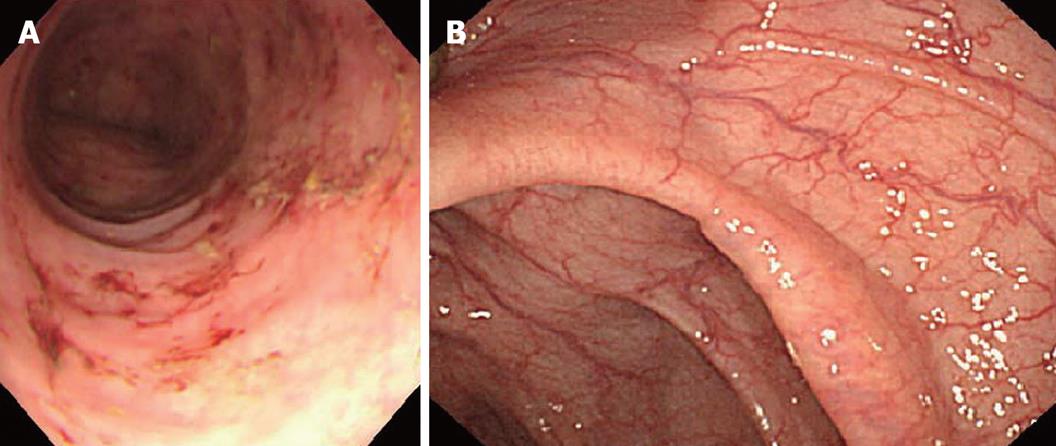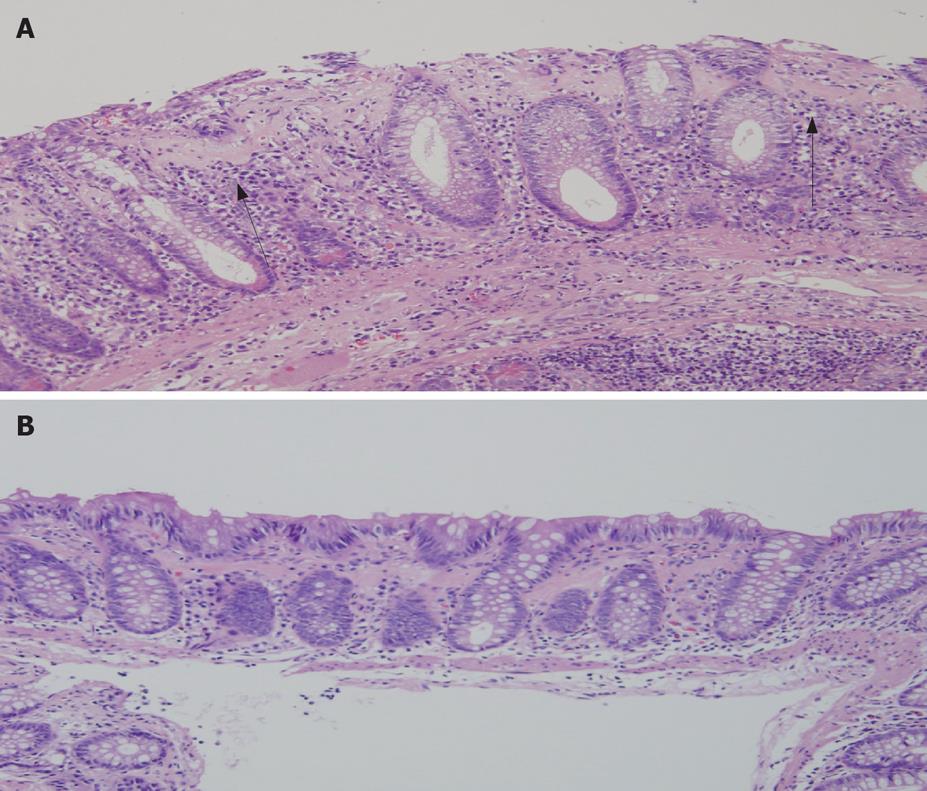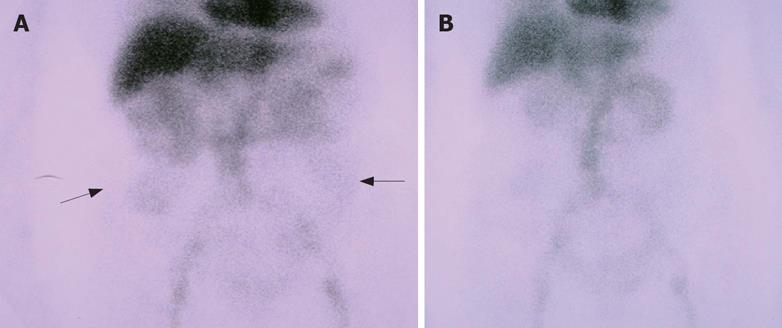Copyright
©2008 The WJG Press and Baishideng.
World J Gastroenterol. Oct 21, 2008; 14(39): 6083-6086
Published online Oct 21, 2008. doi: 10.3748/wjg.14.6083
Published online Oct 21, 2008. doi: 10.3748/wjg.14.6083
Figure 1 Colonoscopy shows an edematous mucosa, diminished vascular transparency throughout the colon on admission.
Friability of mucosa and multiple erythema were observed (A). Endoscopic findings 1 mo after treatment showed normal mucosa (B).
Figure 2 Histology of the biopsied specimen demonstrates subepithelial from eosinophilic band-like deposit (arrows), with increased lymphocytes and plasma cells.
Sloughing of surface epithelium is also shown (A). Epithelial detachment and inflammatory cells decreased, although the collagen band beneath the mucosa was not reduced (B).
Figure 3 99mTc-human serum albumin scintigraphy shows leakage of the tracer in the large bowel (arrows) on admission (A) but no accumulation 1 mo after starting oral prednisolone (B).
- Citation: Sano S, Yamagami K, Tanaka A, Nishio M, Nakamura T, Kubo Y, Inoue T, Ueda W, Okawa K, Yoshioka K. A unique case of collagenous colitis presenting as protein-losing enteropathy successfully treated with prednisolone. World J Gastroenterol 2008; 14(39): 6083-6086
- URL: https://www.wjgnet.com/1007-9327/full/v14/i39/6083.htm
- DOI: https://dx.doi.org/10.3748/wjg.14.6083











